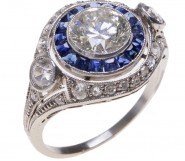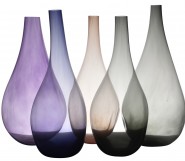Lot #75 - Thomas Griffiths Wainewright
-
Auction House:Bonhams Australia
-
Sale Name:Important Australian Art
-
Sale Date:11 May 2022 ~ 7.30pm (AEST)
-
Lot #:75
-
Lot Description:Thomas Griffiths Wainewright
(British, 1794-1847)
Robert Kennedy Nuttall, 1840-44
watercolour over pencil; housed in original frame
19.0 x 15.0cm (7 1/2 x 5 7/8in).
REFERENCES: Andrew Motion, Wainewright the Poisoner, Faber and Faber, London, 2000, pp. 239, 246, 252, 258, 262, 267, 270; Jane Stewart, Thomas Griffiths Wainewright: Paradise Lost, Tasmanian Museum and Art Gallery, Tasmania, 2021, p. 181 (illus.); A copy of the original handwritten label is attached verso. The label is initialled and in the hand of George Henry Falkiner Nuttall, Robert Kennedy's son: Robert Kennedy Nuttall MD (Aberdeen) L.R.C.S. Ireland. born in Bray Co. Wicklow 9 April 1815, died in San Francisco, California 21 May 1881. This picture was painted at Hobart Town, Van Dieman's Land whilst R.K.N. was there together with his brother-in-law Fred K John Clarke MD, F.R.C.J., who had charge of the Colonial Hospital. The painter, the "famous" Thomas Griffith Wainewright who was serving out his sentence as a convict painted this picture whilst a patient at the Hospital ab't 1842. G.H.F.N. Regarded as the most representative collection of Thomas Griffith Wainewright's pictures in existence, the Nuttall Family Collection was amassed as a result of the friendship between Dr Robert Kennedy Nuttall and the artist. In August of 2021, two other portraits from this celebrated collection were handled by Bonhams having been inherited down through the English line of the family. Wainewright, convicted of forgery and suspected of murder following the mysterious deaths of his grandfather, mother-in-law and sister-in-law, arrived with 301 other convicts aboard the Susan at Van Diemans Land in 1837. By 1840 he was working as an orderly at the Colonial Hospital in Hobart Town where Nuttall had been appointed Assistant Surgeon at the age of 24. Nuttall, cultured and highly social in temperament, encouraged Wainewright to paint, commissioning numerous portraits of family members and promoting Wainewright to other figures of the Hobart society. From 1840 until early April of 1844, Nuttall and Wainewright interacted daily, both at the Hospital and also at Nuttall's home where he sat for various portraits, including this example. One such sitting is described in Andrew Motion's fictionalised account of Wainewright's life, Wainewright the Poisoner as: 'With my journeyman's box and easel banging against my backbone, I soon reach the house of another friend – Dr Nuttall. As I unpack the tools of trade, he takes his chair in a corner, away from the sun, and arranges himself for me in a severe twist. He seems to be shaking hands with himself, and this, like his attire, makes him formal and dignified. Yet his hair, which I have often seen disordered as he walks the wards of the Hospital in a long rapture of sympathy and self-forgetting, looks almost on end, it is so loosely brushed from his brow. Noble face! (Noble whiskers and moustaches!) Discriminating Soul! I would have clasped you in the arms of friendship wherever I had found you. To have had your admiration and trust in this desperate place has been a comfort indeed.'1 Nuttall's high opinion of Wainewright and firm friendship would ultimately result in Wainewright being granted a ticket of leave soon after the application was lodged in 1844. Highly irregular, this was no doubt the product of Nuttall's year-long campaign of support that had commenced in 1843, and included Nuttall's brother-in-law, Frederick Clarke, who was the then Inspector. Dr Clarke's opinion is found in a document he prepared on 9 April 1844, 'I have much pleasure in recommending the Petitioner to the favourable consideration of His Excellency, I believe if this indulgence which he asks were granted, it would tend much to the improvement of his health, and that he would be able from his superior talents as an artist to provide for his own wants, and cease to be a burden on the Government. His conduct has been universally good during the long period I have known him and I feel assured that any indulgence or mitigation awarded by His Excellency will not be unworthily received.' 2 Following Clarke's recommendations, Wainewright prepared his own Petition shortly after, engaging the help of fellow convict-artist Thomas Bock in transcribing it. The importance of and demand for Wainewright's abilities as a portraitist amongst Hobart society cannot be underestimated and this no doubt contributed to Wainewright's swift grant of his ticket of leave. 'Despite its reputation as the harshest, most reviled of penal outposts, the island was also home to those whose wealth enabled the establishment and maintenance of refined, elegant lifestyles. Their prosperity created significant demand for art. By the 1840s, Hobart had hosted Australia's first major art exhibition; and along with Launceston was supporting a substantial number of practitioners who answered the demand for art as proof of status, wealth and social mobility. The island sustained a cultural industry equal to and even outstripping that of Sydney, until the early 1850s.'3 Throughout the 1840s until his death in 1847, Wainewright was to produce portraits of 56 sitters, a legacy which has resulted in a detailed view of the various members of that lively colonial community. Joanne Gilmore, in her catalogue Elegance in Exile notes 'Wainewright created a small but potent body of work since seized on by art historians for its finesse and by others for the sample it allows one to draw of colonial society's texture, structure and content. Not just as the best trained, best connected and most accomplished of artists who came here as convicts, Wainewright appeals deeply also as someone who produced portraits by which the workings and intersections of the community he inhabited can be mapped; as an individual whose ultimately sad and stunted experience here presents a compelling case study in the chancy nature of convictism and exile.'4 In April of 1844, Robert Kennedy Nuttall, along with his brother-in-law Frederick Clarke and family, left Hobart for India with luggage full of portraits including this example. Robert Kennedy Nuttall was to ultimately find his way to California, passing away in San Francisco in May of 1881. In his Will, the various portraits of the Nuttall family by Wainewright were bequeathed to various siblings and children, notably his son, George Henry Falkiner Nuttall, and have remained within the family since. Merryn Schriever 1. Andrew Motion, Wainewright the Poisoner, Faber and Faber, London, 2000, p. 252; 2. Letter from Dr Frederick Clarke to Sir John Eardley Eardley-Wilmot, lieutenant-governor, 9 April 1844, referenced in Motion, p. 276; 3. National Portrait Gallery, A selection of portraits and landscapes from Elegance in Exile: Portrait drawing from colonial Australia, 2012, p. 7; 4. Joanne Gilmore, Elegance in Exile. Portrait Drawings from Colonial Australia, National Portrait Gallery, Canberra, 2012, p. 153 -
Provenance:Robert Kennedy Nuttall, Tasmania; thence by descent within the Nuttall Family (copy of original label attached verso); Private collection, United States of America
-
Estimate:A$70,000 - 100,000
-
Realised Price:
-
Category:Art
This Sale has been held and this item is no longer available. Details are provided for information purposes only.










